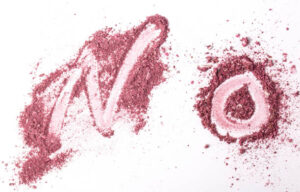
Pink Cocaine
The recent death of popstar Liam Payne has sparked alarm among health officials regarding a drug cocktail known as “pink cocaine.” This mixture has gained notoriety across Europe, particularly after reports indicated that Payne had taken it shortly before his passing.
A preliminary autopsy revealed that a mix of drugs was present in Payne’s system. An anonymous source from Argentina, familiar with the toxicology report, confirmed the findings to the Associated Press.
While the term “pink cocaine” suggests a connection to cocaine, the substance primarily consists of synthetic drugs. The three most common ingredients are MDMA, ketamine, and 2C-B.
MDMA, often referred to as ecstasy, is widely known for its stimulant and mild psychedelic effects. Ketamine, also popular, is a powerful anesthetic with dissociative, sedative, and hallucinogenic properties.
2C-B is less familiar to many but is a potent psychedelic drug, offering both hallucinogenic and stimulant effects. Notably, MDMA and 2C-B are classified as Class A drugs, while ketamine falls under Class B.
The cocktail’s dangerous combination creates a highly potent experience. Health experts are increasingly concerned as this mixture has been linked to a rising number of drug-related fatalities.
Pink cocaine is typically available in either powder or pill form and is easily identifiable by its bright pink hue. This vibrant color is artificially added to enhance its appeal to users.

A significant concern surrounding pink cocaine, also known as “tusi,” stems from its unpredictable mix of substances. Each component carries unique risks, which can lead to dangerous interactions.
Particularly alarming is the presence of ketamine in this cocktail. Misuse of ketamine can result in loss of consciousness and respiratory difficulties, potentially leading to death.
The origins of pink cocaine can be traced back to the 1970s, but it reemerged in its current form in Colombia around 2010. Since then, it has rapidly gained popularity in Latin America and is now making its way into European markets.
In recent years, pink cocaine has gained a reputation as a designer drug. It is often marketed as a high-end product, commanding prices around £76 per gram, according to recent reports.
Liam Payne’s tragic accident occurred while he was visiting Argentina. He fell from a hotel balcony, sustaining fatal injuries. His passing has led to an outpouring of tributes from fans and former bandmates, who expressed deep sorrow over the loss.
The drug’s rise in popularity has prompted health officials to issue warnings about its dangers. The unpredictable nature of pink cocaine can lead to severe health consequences, and users may be unaware of the exact substances they are ingesting.
Experts emphasize the need for increased public awareness regarding the risks associated with this drug cocktail. As its presence spreads, more individuals are at risk of experiencing severe side effects or even fatal outcomes.
In conclusion, the emergence of pink cocaine poses significant public health concerns. The connection to Liam Payne’s death underscores the urgent need for education on the dangers of this synthetic drug mixture.
Health officials continue to monitor the situation, urging caution among potential users. Understanding the ingredients and risks associated with pink cocaine is crucial for protecting individuals and communities alike.
As awareness grows, the hope is to prevent further tragedies linked to this dangerous cocktail. The ongoing conversation surrounding drug safety and education is more important than ever in light of recent events.
The potential consequences of using pink cocaine can be dire. Individuals must consider the risks before engaging in recreational drug use.
By addressing misconceptions and promoting understanding of these substances, society can work towards reducing the harm caused by drugs like pink cocaine.
As authorities continue to investigate the spread of this drug, further information may emerge that could inform public health strategies.
In summary, the tragic death of Liam Payne serves as a stark reminder of the dangers posed by modern drug cocktails. Awareness and education are key in combating the rise of substances like pink cocaine.
It is essential to foster open discussions about drug use and its risks within communities. Increased dialogue can lead to better understanding and prevention efforts.
As the conversation continues, health officials remain committed to ensuring public safety. They stress the importance of recognizing the signs of drug misuse and the potential health risks involved.
Overall, the emergence of pink cocaine highlights the evolving landscape of drug use today. Society must adapt to address the challenges posed by new and dangerous substances.
Education, awareness, and prevention are critical to protecting individuals from the perils of drug misuse. The goal is to create a safer environment for everyone.
As we move forward, it is imperative to remain vigilant against the threats posed by substances like pink cocaine. The tragedy of Liam Payne should serve as a catalyst for change and awareness.
By focusing on prevention and education, we can work to ensure that such tragedies do not happen again. Understanding the risks associated with pink cocaine is a vital step in safeguarding public health.







